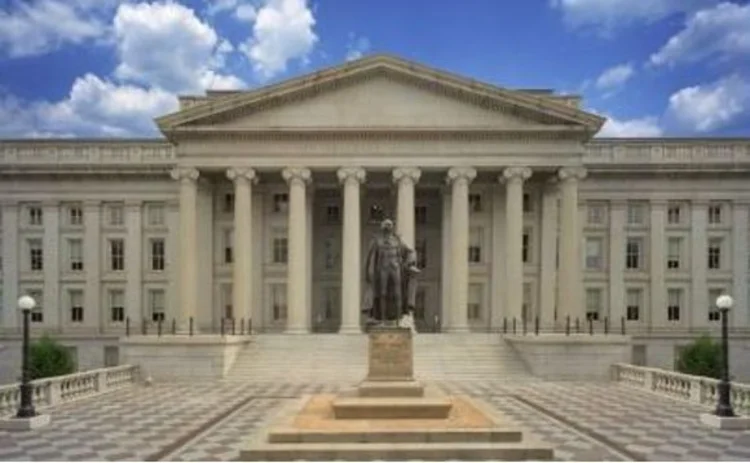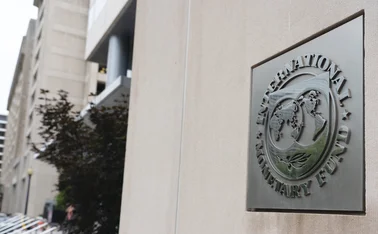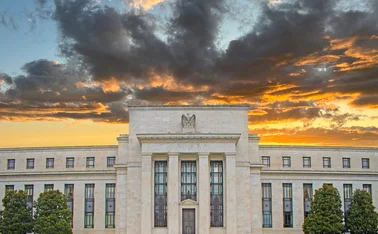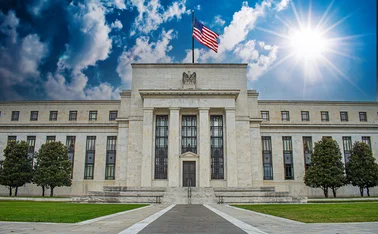
Barofsky: US Treasury abdicated responsibility for AIG

The payment of retention bonuses at AIG Financial Products last year was the result of an "abdication of responsibility" by the US Treasury, says Neil Barofsky, the Washington, DC-based special inspector general for the Troubled Assets Relief Program (Sigtarp), in an exclusive interview with Risk.
Basically, the entire oversight and compliance plan before we got here was to give a lot of money to the banks and trust they would use it appropriately.
Asked whether the Treasury's oversight of AIG's compensation policies was haphazard, Barofsky replies: "They failed to do it completely from November 2008 to March 2009. I think even haphazard might be too kind, because it would suggest there was some ad hoc or continuing oversight going on - and the bottom line was there was virtually none."
While the New York Federal Reserve did provide oversight during this period, it was more aligned with the central bank's policy objectives than those of the Treasury, he says. "The New York Fed did conduct oversight, but it was oversight that was consistent with its concerns, which were different from the Treasury's," he says. The New York Fed failed to understand the seriousness of the issue and pass it on to then-president Timothy Geithner, he says.
Barofsky's criticisms reflect Sigtarp's recent audit into federal agencies' oversight of AIG's compensation policies, which was released on October 14. It found both the Treasury and New York Fed had been involved in overseeing AIG's compensation policies, "although not necessarily in concert".
It might have been necessary to retain some key staff at AIG Financial Products (AIGFP) to unwind the credit default swaps written by the insurer on deteriorating collateralised debt obligations of asset-backed securities, concedes Barofsky - and this was "uniformly believed" by AIG, the New York Fed and the Treasury, he adds.
"On the flip side, I think we can say pretty comfortably that those who worked in AIGFP's kitchen, mailroom or file room were probably not essential to the unwinding of those transactions - and it probably wasn't necessary to pay them retention bonuses," he says.
AIG and the New York Fed are now working in concert to structure future compensation, according to the Sigtarp report. But while conducting the audit, the agency realised no communication was taking place between them and the government's special master for compensation, Kenneth Feinberg, who could have subsequently vetoed the plans. "We were really surprised when we were doing the audit to find that communication was not taking place. So we recommended it. And we were informed that subsequent to their receiving our report, the pay czar did establish communication with the New York Fed and my understanding is they're now working together," says Barofsky.
The lack of effective co-ordination between federal agencies involved in supervising AIG reflects a wider issue with the Tarp, which involves myriad federal agencies in its various programmes. Without learning the lessons of the Treasury's failure at AIG, there is a possibility similar failures could occur, he says. "These mistakes need to be addressed by establishing clear, bright lines of communication and clear, bright lines of guidance and expectation. Without those, we're going to see a repeat of the failures of AIG."
Sigtarp was created to oversee the Tarp after the government's unprecedented foray into financial markets last October, beginning with bailouts of nine major US banks under the Capital Purchase Program (CPP). At the time, the banks were described by then-Treasury secretary Henry Paulson as "healthy" - something Barofsky believes has damaged the credibility of the Treasury and Tarp. "This programme was described as designed for banks that were healthy and viable. But for the first nine institutions that received $125 billion of the CPP funds, that wasn't a consideration at all." Moreover, the Treasury had "serious concerns" about several of the institutions involved, he notes.
Given that smaller institutions were faced with tests to assess their viability as a condition of funding under the CPP, the programme also raises questions of fairness, he says.
Barofsky's findings on the initial handouts to large banks under the CPP were contained in an audit report released on October 5, which recommended the Treasury take care to avoid making inaccurate statements in future. Asked whether a possible bank run might have been a more important concern for the Treasury at the time, Barofsky replies: "I think that would certainly be a very fair concern."
However, it was not necessary to say anything about the relative health of different financial institutions, he says. "You could write a script that doesn't involve anything that's dishonest, as long as those statements are truthfully held and as long as they're stated in fact. But it's inappropriate to suggest that because telling certain aspects of the truth would be harmful, we should tell something that is not truthful."
Since his appointment last December, Barofsky claims some success in achieving his objective of monitoring the use of Tarp funds. "I think we've managed to have a significant impact in a number of different areas that have resulted in stronger compliance and anti-fraud controls across the Tarp programme," he says, pointing to a cultural shift at the Fed and Treasury towards greater transparency.
He also compares the current situation favourably to when Tarp money was first distributed in 2008. "We're not all the way to where we need and want to be - but look at what happened before we existed, when hundreds of billions of dollars were forced out of the Treasury with almost no conditions and almost no fraud protection. Basically, the entire oversight and compliance plan before we got here was to give a lot of money to the banks and trust they would use it appropriately."
Through its oversight of a range of Tarp initiatives, Sigtarp has had a "very significant impact" that might ultimately save US taxpayers "an incalculable amount of money", he adds. In particular, he points to a continuing criminal investigation into Alabama-based Colonial Bank, which applied for $553 million in Tarp funds before its collapse in August, he says. Before its implosion, Sigtarp served subpoenas on the bank relating to its participation in Tarp, reveals Barofsky. "I think there's little question, given that the bank no longer exists, that had that money gone out there's a very good chance taxpayers would have lost all of it. In that instance alone, our office paid for itself for the life of our existence."
Not all Barofsky's recommendations have been implemented. In July, for example, he called for more clarity on banks' use of Tarp funds, which the Treasury has been reluctant to give. Sigtarp has also highlighted the possibility for conflicts of interest arising from the Public-Private Investment Program and proposed the use of Chinese walls at investment firms - another proposal disregarded by the Treasury. But Barofsky remains optimistic: "We take encouragement from our successes and we refuse to accept the fact that we're not eventually going to persuade the Treasury to do the right thing. Sometimes we're puzzled by the failure to adopt transparency recommendations, but we're going to continue to fight for the right of the US taxpayer to know what's going on with their investments."
The full interview with Neil Barofsky will appear in November's issue of Risk.
This article was first published on Risk.net on 21 October.
Only users who have a paid subscription or are part of a corporate subscription are able to print or copy content.
To access these options, along with all other subscription benefits, please contact info@centralbanking.com or view our subscription options here: subscriptions.centralbanking.com/subscribe
You are currently unable to print this content. Please contact info@centralbanking.com to find out more.
You are currently unable to copy this content. Please contact info@centralbanking.com to find out more.
Copyright Infopro Digital Limited. All rights reserved.
As outlined in our terms and conditions, https://www.infopro-digital.com/terms-and-conditions/subscriptions/ (point 2.4), printing is limited to a single copy.
If you would like to purchase additional rights please email info@centralbanking.com test test test
Copyright Infopro Digital Limited. All rights reserved.
You may share this content using our article tools. As outlined in our terms and conditions, https://www.infopro-digital.com/terms-and-conditions/subscriptions/ (clause 2.4), an Authorised User may only make one copy of the materials for their own personal use. You must also comply with the restrictions in clause 2.5.
If you would like to purchase additional rights please email info@centralbanking.com test test test







